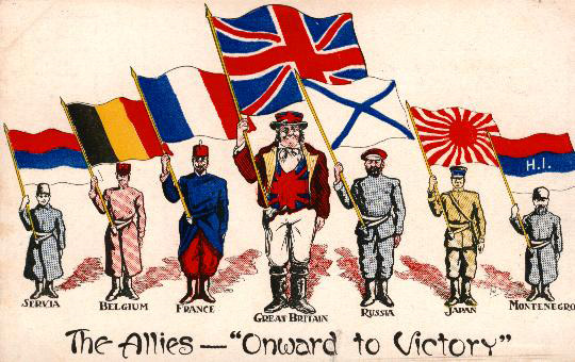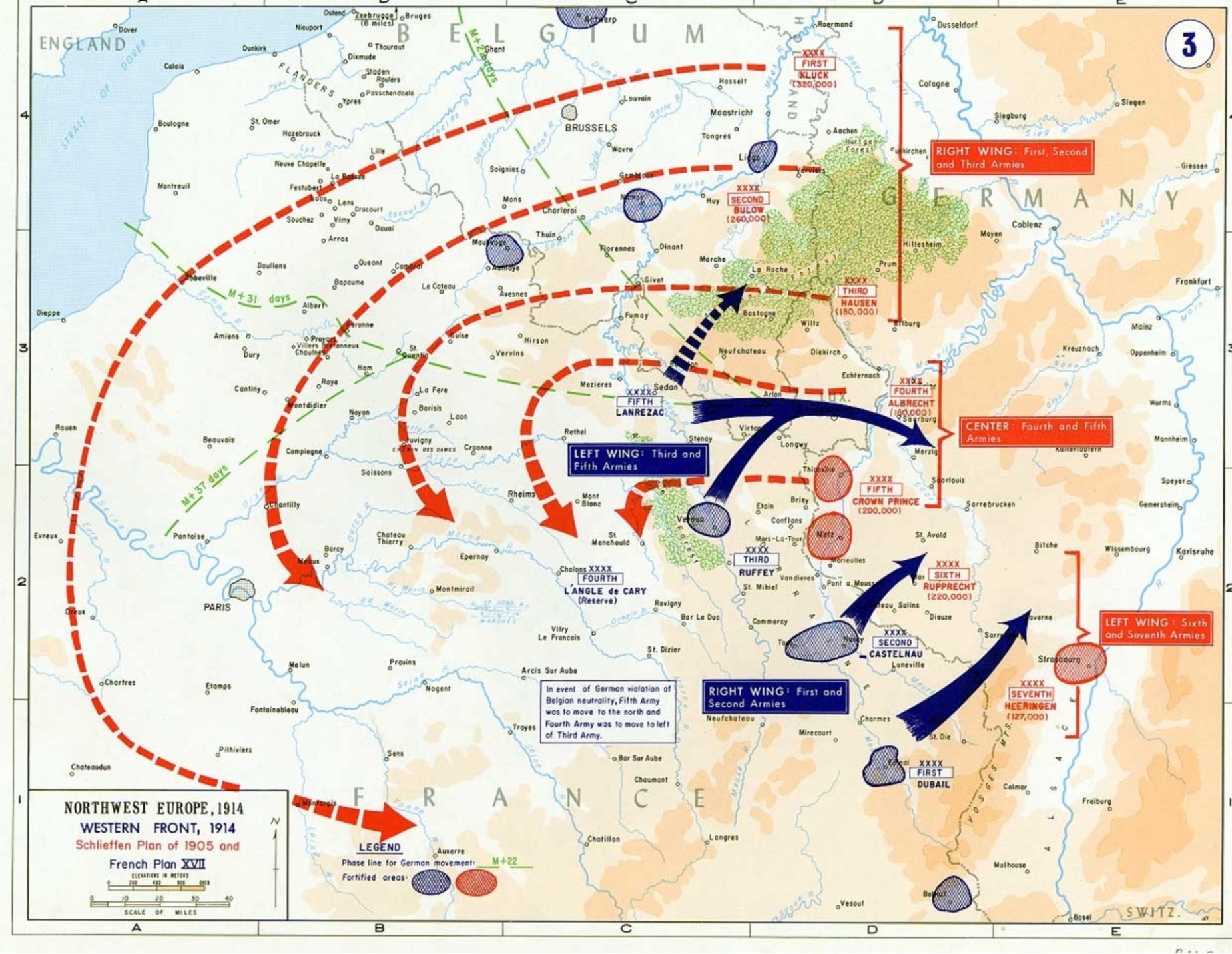Causes of the War
Although the immediate cause of the outbreak of war was the assassination of Austrian Archduke Franz Ferdinand, stresses caused by the Scramble for Africa, nationalist fervor, militarism, and a complex system of treaties all played a part in coming of the war. European leaders were consumed with how powerful they appeared, which made it easier to speak of going to war than the possibility of looking weak for not going to war. Others saw war as an opportunity to achieve goals such as attaining new lands in Russia and France. Internal dissent was rising in Europe. The unions were overpowering the government and could use strikes to force their hands. It is possible the statesmen used war as a way to steer public opinion away from the domestic problems. Militaries were growing at an astonishing rate. France had embarked on a rapid expansion of its military from 1911-1913, which increased tensions with Germany.
Macrohistory: Towards World War I, 1901-1908 (4 pages)
Macrohistory: Europe’s Slide to War, 1911-1914 (6 pages)

Ethnic and nationalist feelings played an important role. Russia felt bound to support other Slavs in Serbia in the face of conflict with Austria, while Germans seemed compelled to support Germans living in Austria in their conflict against Serbia and Russia. Serbia’s goal to create a Greater Serbia based on its own perceptions of historical greatness complicated its relationship with Austria, which believed that Serbia’s independence would be the end of their empire. The multi-ethnic Austro-Hungarian Empire was increasingly burdened by strife among the peoples that it ruled as they sought independence or autonomy, and Austrian leaders feared that a large, independent Serbia would exacerbate the problem by providing an example to other ethnic groups living in the Empire.
Conflict in the Modern World: The Origins of World War I and World War II. Films on Demand. 2008. Accessed October 31, 2020. https://ccco.idm.oclc.org/login?url=https://fod.infobase.com/PortalPlaylists.aspx?wID=151823&xtid=49808
The Origins of World War I and World War II [via Films on Demand]
If you get an error saying the video can’t be authenticated, use the link found in the title to view it.
WWI

When the Serbian anarchist Gavrilo Princip shot Ferdinand, it brought all of these problems to the fore. Serbia’s refusal to let Austrian authorities investigate the crime on Serbian soil makes sense in terms of a nation exerting its own sovereignty. However, within the context of European affairs, it was certain to infuriate Austrians leaders, who tended to view it as an admission that the Serbian government was involved in some way. Their larger conflict with Serbia over its own ambitions colored these perceptions.
Count von Schlieffen devised his infamous plan between 1897-1906. He made two assumptions. First, France was weak. Germany planned to march through Flanders and Belgium, defeating France within 45 days (Onion). This would provide Germany with enough time to deploy its armed forces to its eastern border, because it assumed, Russia’s army would take at least six weeks to mobilize.

Helmuth von Moltke, chief of the German General Staff, adopted the Schlieffen Plan when war broke out in 1914. Unfortunately, Belgium refused Germany’s request for free passage. When Germany entered Belgium anyway, it triggered a series of mutual defense treaties that launched Europe into war.
Macrohistory: Russian Revolution Begins
Macrohistory: Power to the Soviets (6 pages)
Macrohistory: The War to December 1916 (11 pages)
Macrohistory: The US Declares War (2 pages)
Macrohistory: Western and Italian Fronts in 1917
Macrohistory: Germany’s 1918 Offensives and the Armistice (5 pages)
National Responsibility
Although the Treaty of Versailles forced Germany to accept all blame for the war, it appears as though a domino effect took place in drawing more powers into what should have been a regional conflict. If Germany had not been willing to support Austrian leaders they may not have issued an ultimatum to Serbia over conducting its own investigation. Serbia knew they had Russian support, which emboldened them to resist Austrian demands, and Russian mobilization to defend Serbia brought Germany into the war. Because of inflexible military policies on the part of Germany, including the Schlieffen Plan, it had to invade France. In doing so, German troops crossed neutral Belgium to invade France, flanking the Maginot Line, bringing Great Britain into the war on the side of France and Russia.
Macrohistory: Failed Uprising in Germany, 1918-1919 (2 pages)
Macrohistory: The Treaty of Versailles (2 pages)
References
Onion, Amanda. “Was Germany Doomed in World War I by the Schlieffen Plan?” History Channel. Accessed August 10, 2018. https://www.history.com/news/was-germany-doomed-in-world-war-i-by-the-schlieffen-plan.
